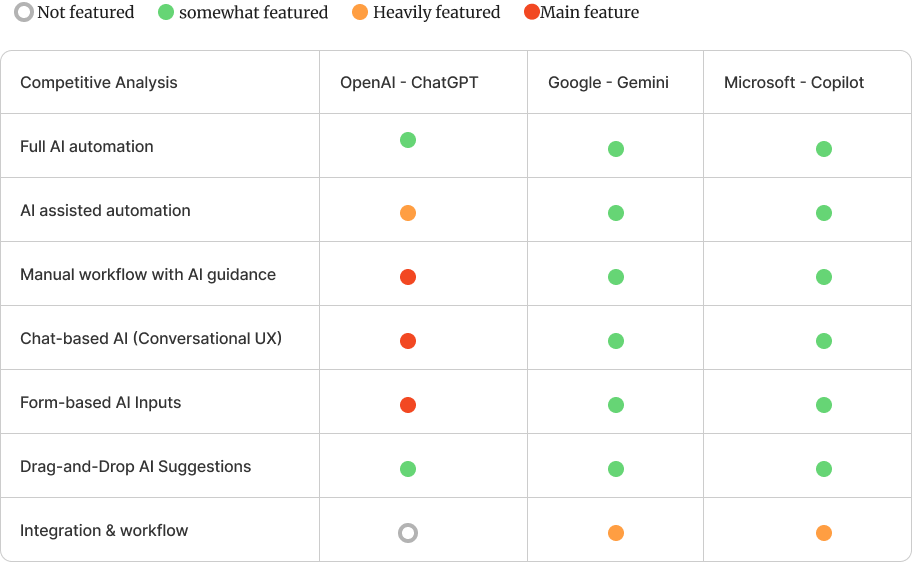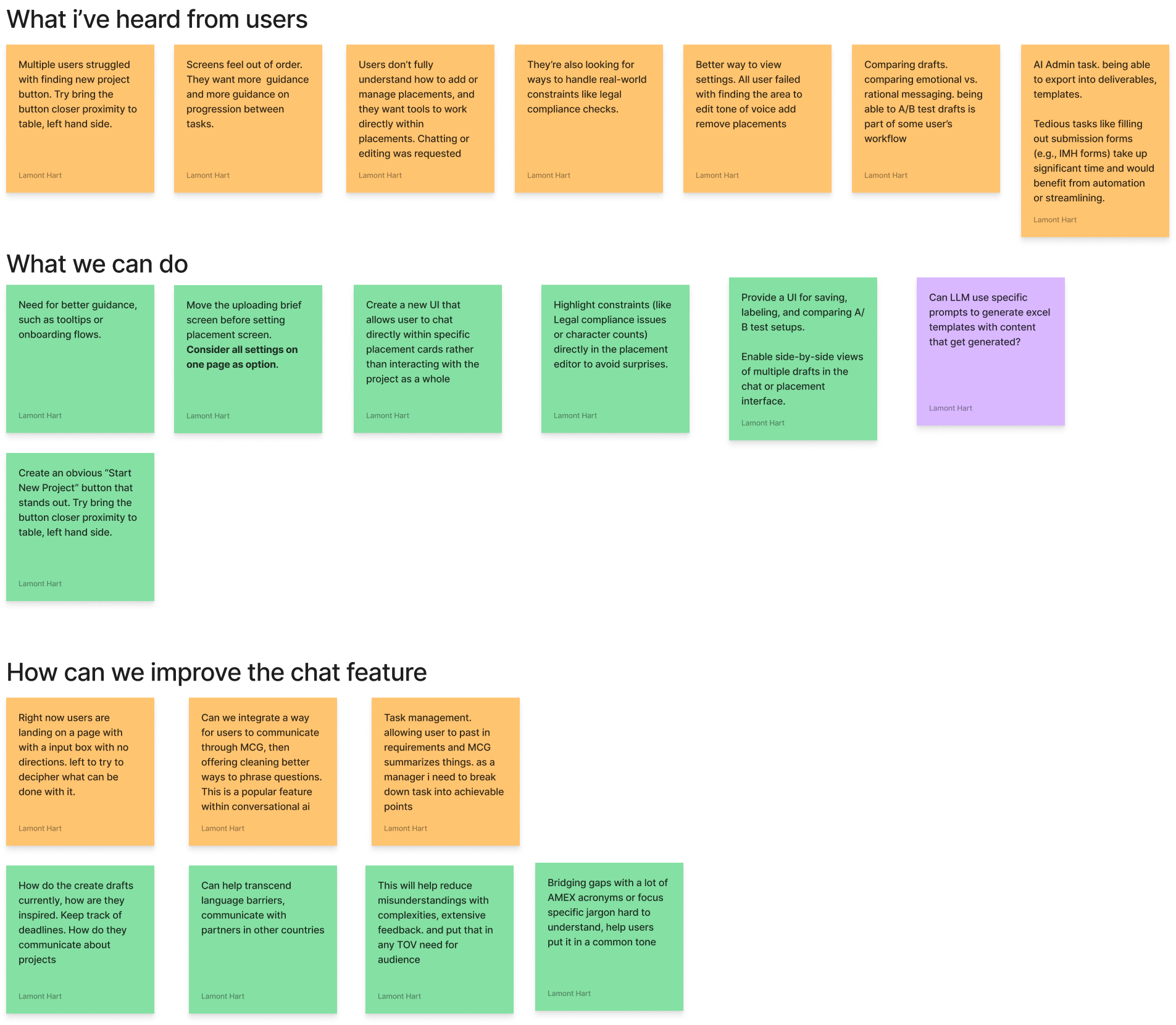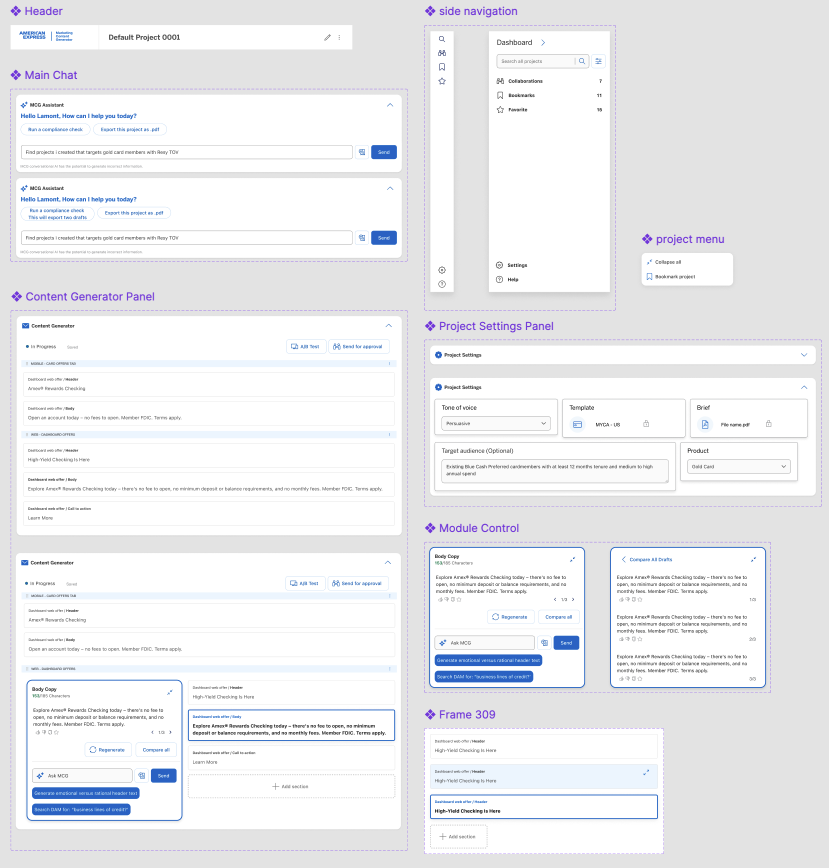

Marketers face complex workflows, time-consuming processes, and skepticism about AI replacing their roles. How can a Gen AI tool ease their workload, build trust, and enhance productivity? The challenge is to simplify campaign execution by reducing steps, accelerate workflows by automating core tasks, and amplify creativity by enhancing the value of the creative process—ultimately making AI an empowering tool rather than a disruptive force.
My role as UX Designer was to discover ways to use AI to make content creation faster and help personalize marketing more effectively by:
Created reusable UI components and migrated designs internal design system, DLS 7
Discover solutions by way of AI-generated content to improve marketing workflows
Develops wireframes, prototypes, and journey maps for demonstrations and user testing.
Reviews product changes for alignment with UX standards and suggests improvements.
Produces final designs for development teams to implement.
Since AI-powered discovery was still a new concept at the time of this research, I took an indirect approach to competitor analysis. I studied AI leaders like OpenAI, Google, and Microsoft to compare hypothetical workflows, simplify user processes, and identify UX patterns that reduce skepticism and build trust in AI-powered apps.

I conducted interviews with available testing participants to understand their needs, concerns, and sentiment toward AI in their workflow. I identified early adopters vs. skeptics and explored the factors influencing their perceptions of AI-powered tools.

Initially, stakeholders advocated for full AI automation, generating entire marketing campaigns with minimal human input. However, testing revealed that this approach did not build trust among users. Based on these insights, I redesigned the workflow to balance manual control with AI assistance. The new concept allowed AI to suggest content while users reviewed and customized it before finalizing. I also introduced input sections for deeper AI suggestions and chat-based controls for managing the entire project.

As workflows expanded across different scenarios, the design file grew rapidly from sprint to sprint. Efficiently managing design components became essential for rapid prototyping and accommodating stakeholder requests. I ensured best practices in file organization, layout structure, and component management to maintain scalability and efficiency.

I actively participated in daily standups to address developer questions on design, UX patterns, and trade-offs. Weekly syncs ensured alignment on the latest changes and kept stakeholders informed. To remove ambiguity, I created detailed user flow mocks and leveraged Slack to stay updated on engineering challenges and discussions..
Copyright © Lamonthart.com